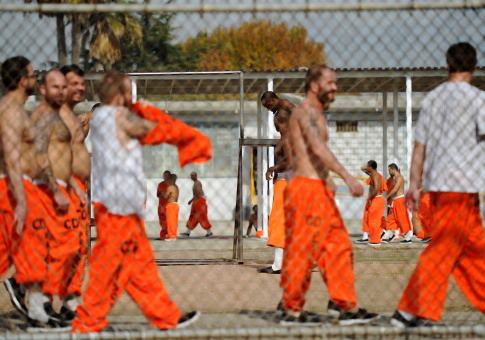The size of America's prison system, unparalleled worldwide, has become a political priority on the left and right. For both sides, the War on Drugs, harsh sentencing laws, and the private prison industry are key culprits responsible for America's spiking incarceration rate. The unanimity behind this causal story has led to the conclusion that all that stands in the way of reducing incarceration is the question of when to get started.
In Locked In: The True Causes of Mass Incarceration, John Pfaff takes these causes—what he calls the "standard story"—to task. Pfaff, a professor of law at Fordham University and a scholar of economics and law, presents a compelling account of mass incarceration, backed by robust statistics, to argue that current reforms are merely low-hanging fruit and will fail to bring about any meaningful reduction in the incarcerated population. Rather, to address the 2.3 million American prison inhabitants, reform efforts must address the relevant problems on a more fundamental level.
Take, for example, the War on Drugs. In her influential The New Jim Crow (to which Pfaff is in no small part responding), civil rights lawyer Michelle Alexander insists that "convictions for drug offenses are the single most important cause of the explosion in incarceration rates in the United States." This account is appealing because it is easy. End the drug war—a move increasingly supported by Americans—and we can substantially reduce or end mass incarceration.
Unfortunately, Pfaff responds, drug policy is not the panacea people like Alexander would like to imagine. As of 2013, less than 16 percent of prisoners were serving time for drug use. Pfaff points out that of the 1 million new inmates in state prisons (which hold the majority of the prison population) between 1980 and 2009 (covering much of the modern spike in incarceration), only about 20 percent were admitted for drug-related charges.
The War on Drugs analysis also falls short in its fixation on "low-level, nonviolent offenders," whom proponents of reform often claim constitute a major share of the prison population. Based on 1997 data (the most recent available), only about 4 percent of state prisoners and 6.6 percent of federal prisoners are in the this group, wildly out of proportion with the amount of attention reformers and the media like to give them.
In a refreshing move for a self-professed reformer, Pfaff also disagrees with those on the left who hyper-fixate on the role played by the private prison industry. Abolishing private prisons would reduce state prison populations by just seven percent, he argues. By fixating on private prisons, reformers discount the outsized impact of public sector lobbying groups.
How, then, can the prison population be meaningfully reduced? The blame lies first and foremost with America’s highly funded and largely unaccountable prosecutors. According to Locked In's analysis, prison admissions per prosecutor have remained constant over the past 25 years, even as crime and arrests per prosecutor have fallen substantially. In other words: Even though crime is going down, prosecutors continue to put the same number of people away.
The reason for this is a "black box" due to a shocking lack of data about prosecutorial conduct. While Pfaff offers a number of hypotheses for the spike in people admitted by prosecutors, his writing here is most compelling as a case for the importance of more data.
Beyond prosecutorial conduct, Pfaff has other targets for the aspiring carceral reformer: reducing the impact of sensational but nonrepresentative crimes; addressing the disparities in power between urban and rural populations; and accounting for the hyper-localism of America’s more than 3,000 county-level justice systems. But these are simply band-aids compared with the most radical strategy Pfaff suggests to reduce prison populations: Release more violent offenders.
"If we are serious about wanting to scale back incarceration," writes Pfaff, "we need to start cutting back on locking up people for violent crimes." This is because no single change will have as much of an impact on absolute prison populations. Fifty-two percent of the growth in state prisons is attributable to violent offenders. That number rises to 60 percent between 1990 and 2009. These are "fairly serious violent crimes […] 3,000,000 people, or nearly one in four prisoners [are] serving time for killing someone or for armed robbery."
Pfaff suggests a number of ways to go about this, such as reducing sentence lengths or freeing low-level violent offenders. But, he concedes, "it should be clear that real reform will be impossible if we continue to avoid talking about how to change the way we punish serious violent crimes."
In admitting as much, he makes clear the illusory nature of the reformist consensus that currently holds sway. Reducing mass incarceration is not merely a matter of rectifying obvious injustices. Rather, Americans will need to be willing to be more lenient in how we punish violent criminals.
If we are to move beyond the reform’s low hanging fruit, we will have to weigh the interests of the incarcerated against those of society at large. This is by no means a categorical argument against reform. Prisoners are citizens and, even more importantly, persons with human dignity—and many argue that America's prisons are inhumane in their current form. This is perhaps the most important takeaway from Locked In—that when we look past the "standard story," we realize that reducing the prison population in fact requires grappling with moral questions, not merely mathematical ones.
